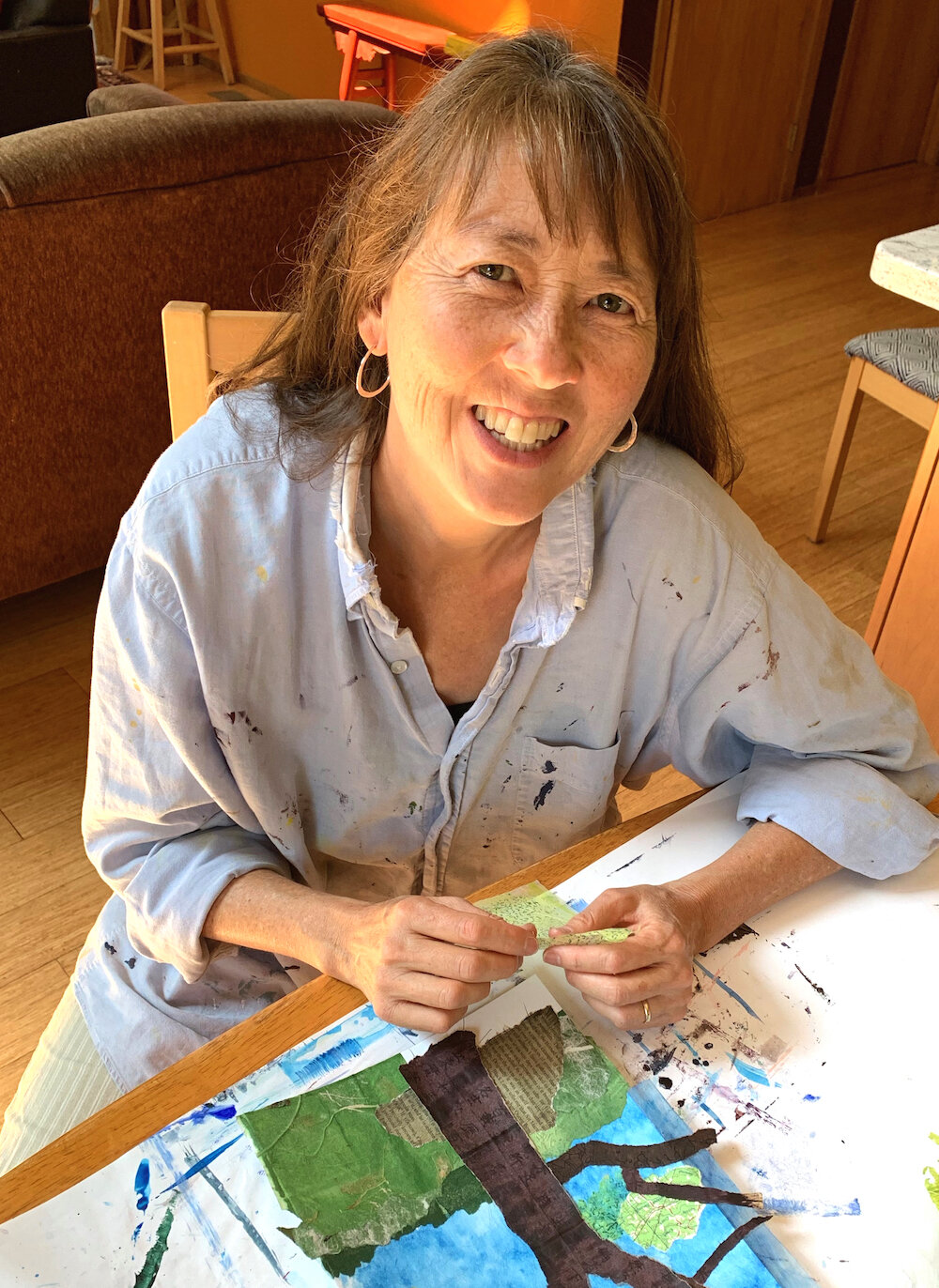HAIKU WINNER: This collage by Annette Makino is made from painted and torn Japanese washi papers. Featuring a view of the Klamath River, it incorporates her winning one-line haiku.
MAD RIVER UNION, ARCATA, CA, APRIL 21, 2021
On April 17, Arcata artist and poet Annette Makino was awarded one of the highest honors for haiku in English, a Touchstone Award from the Haiku Foundation.
Announced on International Haiku Poetry Day, the award recognizes the best individual poems published the previous year.
Makino wrote her winning one-line haiku while on a creative retreat at the Klamath River in Orleans last summer. It reads:
long before language the S of the river
Makino has a business, Makino Studios, selling her art and haiku in the form of cards and calendars in stores and online. A mixed media artist, she creates both Japanese watercolors and Japanese-inspired collages
She said, “I’m truly thrilled to get this recognition, especially because I’m celebrating 10 years as a working artist and poet this spring. It’s the perfect capstone to a decade of learning and growing in my craft.”
The Haiku Foundation site explains, “The Touchstone Awards for Individual Poems recognize excellence and innovation in English-language haiku and senryu published in juried public venues during each calendar year.”
This year the contest saw 1302 poems nominated from 31 countries, mostly selected by haiku editors. All the shortlisted poems are online at thehaikufoundation.org.
Makino’s haiku have won many other awards and her poems and art regularly appear in the leading journals and anthologies of haiku in English.
She is currently at work on her first full-length book with the working title Water and Stone, to be published in the early summer. The culmination of a decade of painting and writing, the book will feature 50 of her haiga—artworks combined with haiku—painted with Japanese watercolors and sumi ink.








